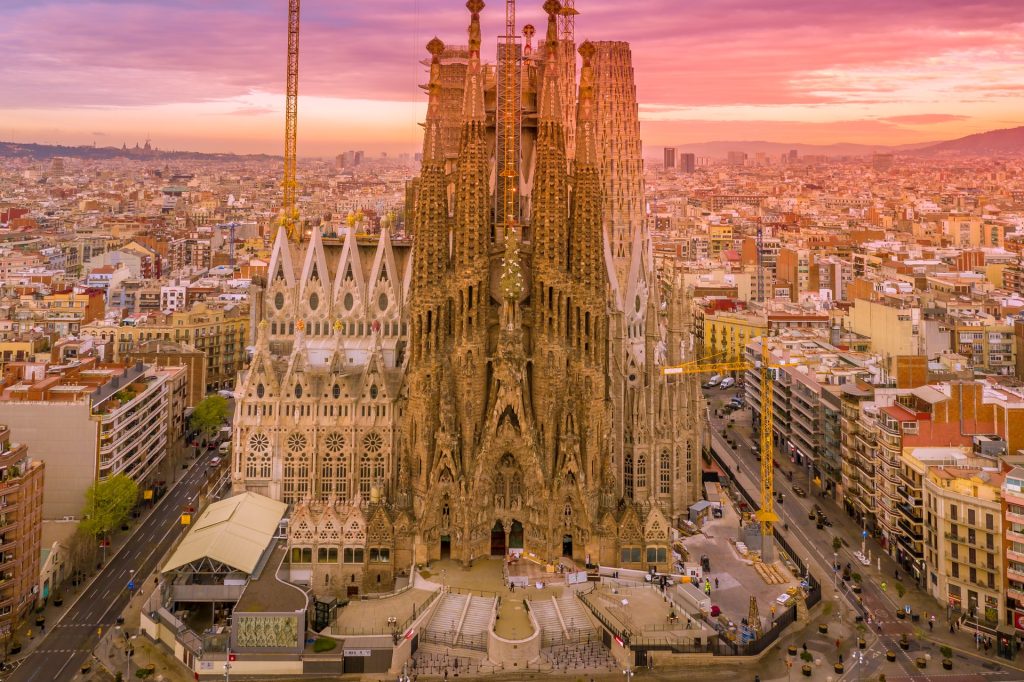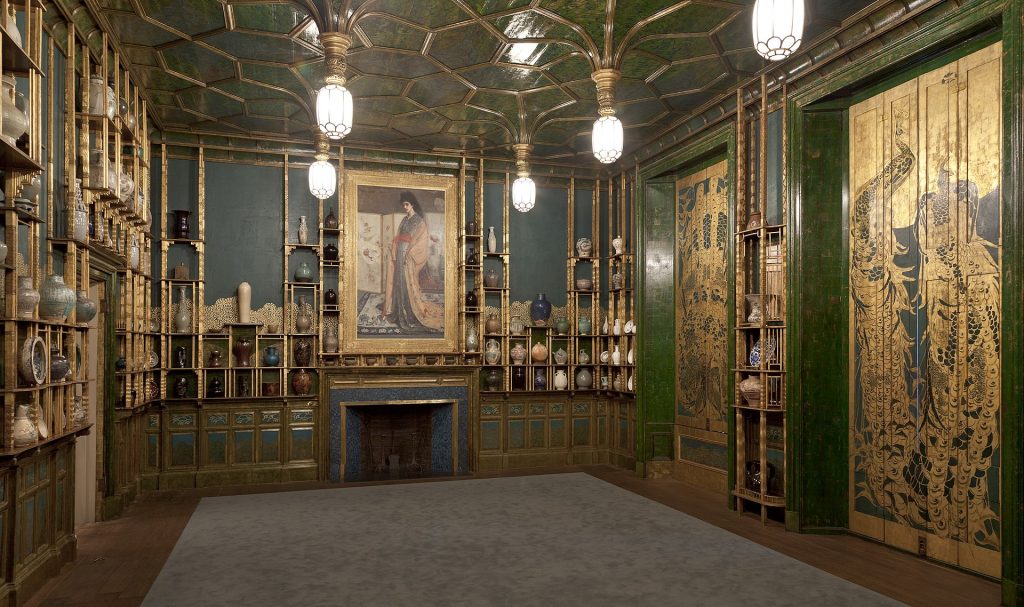A decorative and architectural style known as Art Nouveau emerged in the West during the 1880s and 1890s; Art Nouveau, which appeared in response to the Industrial Revolution and the creative void it created, was the driving force behind a “renaissance” in the decorative arts. The industrial world gives birth to a new social class; they suddenly raise consumers’ newly invented architecture and design ideas.
Art Nouveau’s main goal was to revive the study of natural subjects to establish a new aesthetic of Nature. Artists like Gustav Klimt, Koloman Moser, Antoni Gaudí, Jan Toorop, and William Morris encouraged technical innovation and form uniqueness to accomplish this. Following its success at the 1900 Paris Universal Exposition, the trend persisted and has inspired several artists ever since. Following World War II, Art Nouveau gave way to Art Déco.
The decorative arts movement that emerged in Western Europe in 1892 gave rise to Art Nouveau, but its origins were more accidental than is generally thought. Decoration and furniture saw significant modifications between the end of the Empire Style in about 1815 and the centenary celebration of the French Revolution in Paris in 1889. Too many of these distinct historical styles were shaped by tradition (or imitation) for any one tendency to develop and take centre stage.
Origin of the Art Nouveau Moment
The rejection of conventional architectural styles and, in particular, the use of new industrial materials (steel, reinforced concrete, and dating to the Art Nouveau period for potential information on the materials’ recipes and placement technologies) are generally regarded as the foundations of Art Nouveau architecture. There was less environment than ever due to the influx of people from rural and undeveloped areas to large cities. Nature was no longer a part of living but rather an observational science. The uniqueness of Art Nouveau is greatly influenced by both nature and modernism. This notion was intended to challenge the outdated, “dominant, and change-resistant art formulas.”
Many factors influenced the emergence of Art Nouveau. This inflexibility in fashion was fostered by the Industrial Revolution’s breakthroughs in metal technology, which allowed for the mass production of goods by machines. The flowing curves and muted colours of the glass bowls, vases, and other pieces made by French designer and artist Emile Gallé are still highly prized. However, his interest in evolution and botany is less well-known. Gallé pioneered the art nouveau movement, a critical art and design movement. However, wearing jewellery inspired by ancient Greek, Roman, and Etruscan artefacts became fashionable as archaeology gained prominence in the middle of the 19th century. Artists shunned the romantic revival spurred by this historicism.

The term “Art Nouveau” eventually entered common usage, but the terms could not identify a consistent movement that may have given rise to a particular style. In actuality, Art Nouveau differed by nation and popular preference. As we’ll see, the revolution began as a national movement in England, where it started. We shall go into great detail on two facets of the trend: nationalism and cosmopolitanism. Both are justified movements, as evidenced by the conflict in the arts, but they falter when they become overly rigid and exclusive.
The flowing, asymmetrical lines characteristic of the Art Nouveau style often mimic the stalks and buds of flowers, the tendrils of vines, the wings of insects, and other delicate, sinuous natural components. These lines might have a robust, whip-like force or be beautiful and graceful. Among the many repeated images in the Art Nouveau style, the most famous theme is a partially or wholly clothed lady encircled by her loose, flowing hair. An abundance of ornamental plants served as a significant source of inspiration and perfectly embodied the core principles of the new artistic movement. Among the most common motifs were trees, perennials, bulbs, the still-underappreciated herbaceous plants, their stems, leaves, inflorescences, and fruit.
Building Materials and Technology
Many variations exist in interpreting the Art Nouveau movement about building materials, techniques, and architectural design. In Italy, embellishments meant to mimic natural stone were made with contemporary materials like concrete and mortar with a cement base. One method used to manufacture “artificial stones” was cement binder. The resulting agglomerated cement-bound stones come in a variety of colours and textures.
On the other hand, in Portugal, Art Nouveau embellishments were mainly made with traditional materials such as gypsum plaster, hand-carved stone, and lime plaster mortars. Even the ceramic tiles showcasing iconic Art Nouveau characters were created with outdated methods; the design patterns were only modified to fit the new aesthetic. Adobe bricks were used to build the main structural walls that carried the weight.
The art of Art Nouveau was created by the lesser-known masters of statuettes, whose elegant creations were more severe pieces made of bronze, marble, and ivory, as well as delicate figurines that hung, crouched, or extended themselves in supple nudity on any objects.
Nature: The Inspiration

Antoni Gaudí’s fantastical unfinished basilica teems with symbolism and unexpected twists. / getyourguide.com
One may argue that people have always looked to “Nature,” as it is widely and jokingly perceived worldwide, as their primary source of creative inspiration. Based on the notion that Nature herself made the first ornaments. Everything in Nature is harmonious, even the smallest details—shells, conches, flowers in hair, bones around the neck, etc. Setting things up is the conventional definition of beauty.
With an open mind and a sensitive, receptive soul, we can learn from the lessons of nature at any time. To minimise overloads in the event of rain, plant leaves, for example, attain the best balance by covering the most significant possible area, absorbing the most light, and allowing water to pass. Similar to this, hyperbolic forms in bones are the best for balancing in nature. They are more robust than cylindrical designs because they are made of the same material as conventional architectural columns.
Then, the lighting innovation of the era brought light to previously excessively dark and thickly covered homes. This association between Art Nouveau and truly mystical uses of electricity benefited the movement. All lighting requirements were met by electricity, which also demanded a creative transformation of lamps in Germany, England, and the United States. The lamp was redesigned into various shapes and sizes, allowing the opaque glass to be skillfully and subtly coloured to provide an alluring glow in interior spaces.
Antoni Gaudi: Architects of Visual Ideas, Considered ‘God’ as Client






